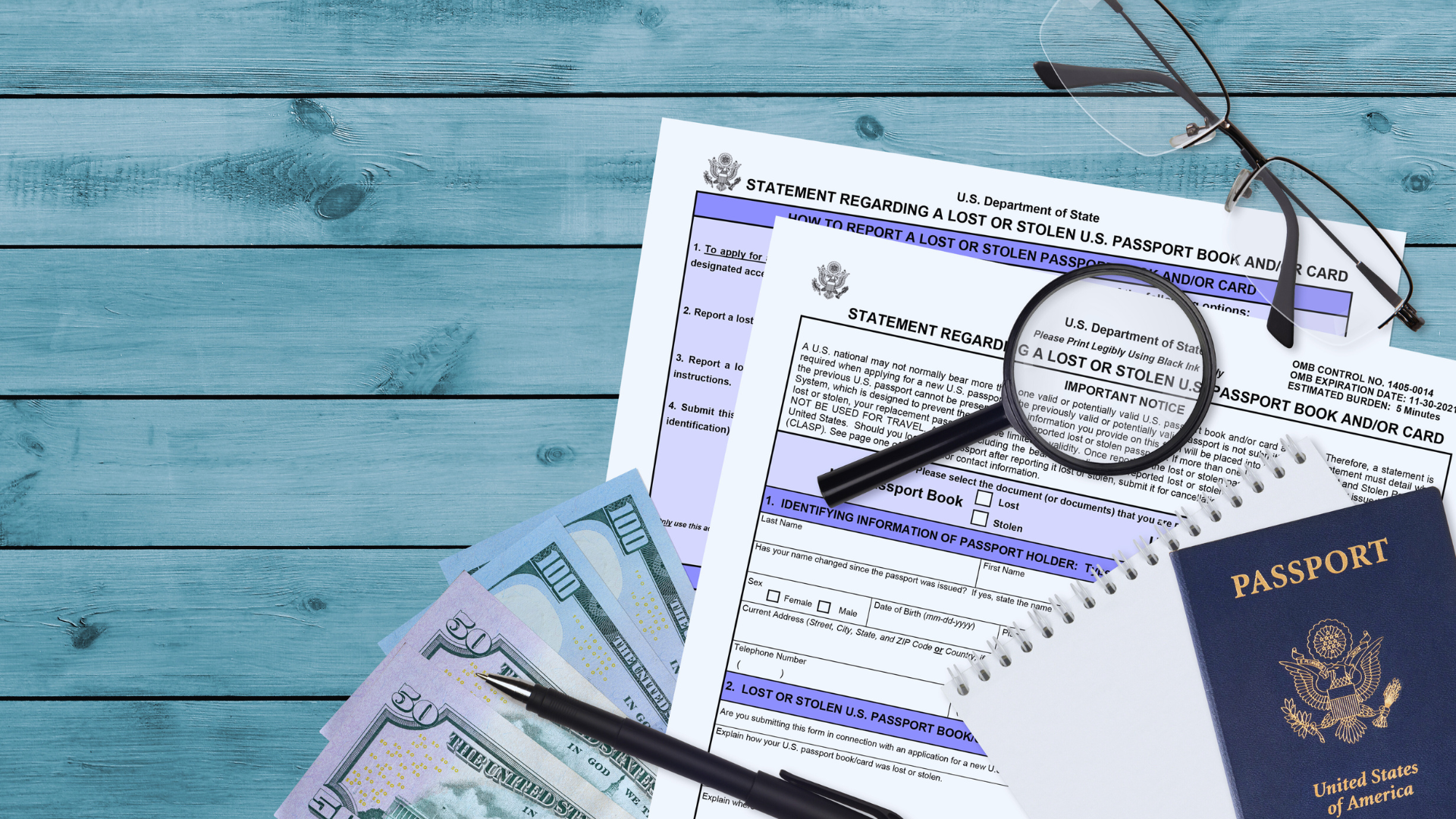Losing a passport while traveling can be a stressful experience, but knowing the right steps to take can help mitigate panic and confusion. The first action is to report the stolen passport to the local authorities and obtain a police report, which is crucial for future documentation. Travelers should then contact their home country’s embassy or consulate for guidance on obtaining a replacement passport.
Identification is key when addressing this issue. Travelers may need to present additional forms of ID, such as a driver’s license or a copy of their stolen passport. It’s also wise to keep copies of important documents stored separately while abroad to simplify the replacement process.
Being proactive can make a significant difference. Travelers are encouraged to familiarize themselves with their embassy’s procedures before embarking on international travel, ensuring they know whom to contact in case of emergency. Keeping calm and following these steps can help restore peace of mind during an unsettling situation.
Immediate Steps After Discovering Your Passport Is Stolen
Acting quickly is essential when someone discovers their passport has been stolen while abroad. There are key actions to take that can help recover the passport or facilitate safe travel back home.
Secure Your Personal Safety
The first priority must be personal safety. If the theft occurs in a busy area, it is crucial to move to a secure location. This may involve finding a nearby hotel, restaurant, or police station where they can assess the situation.
They should remain alert and make sure their other belongings are secure. If anyone is hurt or in danger, they should seek help from nearby individuals or call local emergency services right away.
Report the Theft to Local Authorities
After ensuring safety, reporting the theft to local authorities is necessary. The individual should visit the nearest police station to file a report.
When doing so, they must provide details, including the location, time, and circumstances of the theft. It can be helpful to have a description of the lost passport ready, as the police may request this information.
Once the report is filed, obtaining a copy is important for future reference. This police report may be required later when contacting the embassy or when making an insurance claim.
Contact Your Embassy or Consulate
Next, contacting the appropriate embassy or consulate is a critical step. They should locate the nearest U.S. Embassy or Consulate and reach out to them as soon as possible. The consular section can provide guidance on the process for reporting a stolen passport and obtaining a replacement.
During this communication, they must have their travel itinerary and personal identification ready if available. The embassy will usually require specific information to assist, including details from the police report.
Document the Incident
Finally, keeping a detailed record of the theft and all actions taken is essential. This documentation can prove invaluable later.
They should take notes of conversations with law enforcement and embassy personnel. Taking photos of the location where the theft occurred can also be useful.
Additionally, if any other items were stolen alongside the passport, such as credit cards or ID, this should be noted. This record will help in tracking progress with local authorities and ensure accountability when seeking a replacement passport.
How to Replace a Stolen Passport Abroad
Replacing a stolen passport while abroad involves several critical steps. It requires obtaining necessary documentation, filling out specific forms, preparing photos, and visiting the appropriate embassy or consular agency.
Obtaining a Police Report and Required Documentation
The first step is to report the theft to local authorities. This often involves visiting a local police station to file a report. A police report serves as official documentation of the theft and is required when applying for a replacement passport.
To speed up the process, include personal details such as your full name, date of birth, the location of the theft, and any identification numbers.
It is also advisable to gather additional documents to support the application, such as a copy of the stolen passport, driver’s license, or any other form of identification.
Filling Out Passport Replacement Forms
To initiate the passport replacement process, filling out specific U.S. State Department forms is necessary. This includes Form DS-64, which is the statement regarding a lost or stolen passport.
Additionally, Form DS-11 is required for applying for a new passport. These forms can often be completed online using an online form filler or printed for in-person submission.
Accurate completion of these forms is crucial. Missing information or inaccuracies can result in delays. After filling out the forms, one should be prepared to pay applicable passport fees, which may vary based on processing speed.
Preparing Passport Photos and Proof of Citizenship
Passport photos must meet specific requirements for size and quality. Typically, a recent photo taken against a plain white background suffices. They should measure 2×2 inches and show a clear view of the subject’s face.
Proof of U.S. citizenship is also essential when replacing a passport. Acceptable documents include a birth certificate, a naturalization certificate, or a previous passport if available.
Both the passport photos and proof of citizenship should be prepared in advance to streamline the application process and avoid delays when visiting the embassy.
Visiting the U.S. Embassy or Consular Agency
The final step involves visiting the nearest U.S. embassy or consular agency. It’s best to check in advance for operating hours and any need for appointments. Some locations may provide emergency passport services, especially in urgent situations.
When visiting, take all prepared documentation, forms, photos, and the police report. Once at the embassy, officials will review the application and issue a limited-validity emergency passport if required.
This passport will allow for travel and will be valid for a determined period. Expedited service may also be available for those needing quicker processing.
Safeguarding Your Identity and Preventing Future Issues
Taking immediate steps after a passport is stolen is crucial for protecting one’s identity and minimizing complications. Key actions include notifying relevant agencies and understanding potential risks associated with identity theft.
Notifying Credit Bureaus and the U.S. Department of State
Contacting the major credit bureaus—Equifax, Experian, and TransUnion—is vital. Individuals should request a fraud alert on their credit reports. This alert warns creditors to take extra steps before granting credit, hence reducing the risk of identity fraud.
Simultaneously, notifying the U.S. Department of State is essential. They can assist with issuing a replacement passport and provide guidance on securing identity. Completing a loss report can help safeguard against future threats.
Understanding the Risks of Identity Theft
Identity theft can occur swiftly after a passport is stolen. Without protective measures, fraudulent activities may escalate, leading to unauthorized financial transactions or account openings.
Victims often face a prolonged recovery process, including repairing their credit and proving they did not authorize transactions. Awareness of these risks highlights the importance of preventative steps. Regularly monitoring bank and credit statements can catch potential fraud early.
Enrolling in the Smart Traveler Enrollment Program
The Smart Traveler Enrollment Program (STEP) provides important alerts for travelers. By enrolling, individuals receive timely information about potential risks in their travel destination.
This program also allows the U.S. Department of State to assist travelers in emergencies, including stolen passports. Regular check-ins and updates can significantly contribute to travel safety, making it easier to handle potential issues promptly.
Travel Considerations and Contingency Planning
When a passport is stolen while traveling, it’s essential to address the impact on current travel plans and explore options for managing the situation effectively. Comprehensive planning and insurance coverage play crucial roles in navigating travel disruptions.
Updating Travel Plans After Passport Loss
A stolen passport requires immediate reassessment of travel plans. First, the individual should contact local authorities to file a police report. This documentation may be necessary for the embassy or consulate.
Next, they should reach out to their airline and accommodation providers. Some airlines may allow a change of travel dates without penalty, depending on the situation.
Travelers might also need to alter their itinerary if traveling to new countries that require a visa. Staying informed about visa requirements is critical to avoid further complications.
Role of Travel Insurance in Crisis Situations
Travel insurance offers significant support in crises like a stolen passport. Most policies provide assistance with emergency travel documents, which can expedite the traveler’s recovery process.
Individuals should familiarize themselves with their policy details. Some insurance covers unexpected costs incurred due to changes in travel plans or accommodations needed as a result of prolonged delays.
Contacting the insurance provider promptly is crucial for enabling the necessary assistance. A dedicated support team can guide the traveler through needed steps and provide reassurance during a stressful time.
Using Alternatives to an Expired or Missing Passport
When a passport is lost, it may be possible to use alternative identification for certain scenarios. A government-issued ID, such as a driver’s license, can sometimes suffice for domestic flights or local entry.
In emergencies, some countries offer limited travel documents for individuals with a passport loss. These temporary documents can assist in re-entering one’s home country or continuing travel within the region.
Travelers should always carry backup copies of important documents, including a photocopy of their passport. This practice can facilitate discussions with authorities and streamline the replacement process.
Protecting Your Passport While Traveling
Preventive measures can mitigate the risk of passport theft. Using a money belt is an effective strategy to keep passports secure and close to the body.
Travelers should also be cautious in crowded areas or tourist hotspots. Keeping the passport in a hotel safe or using anti-theft bags can further enhance security.
Being aware of one’s surroundings is critical. In the event of a natural disaster, travelers should prioritize securing their documents and follow local emergency guidelines promptly.



